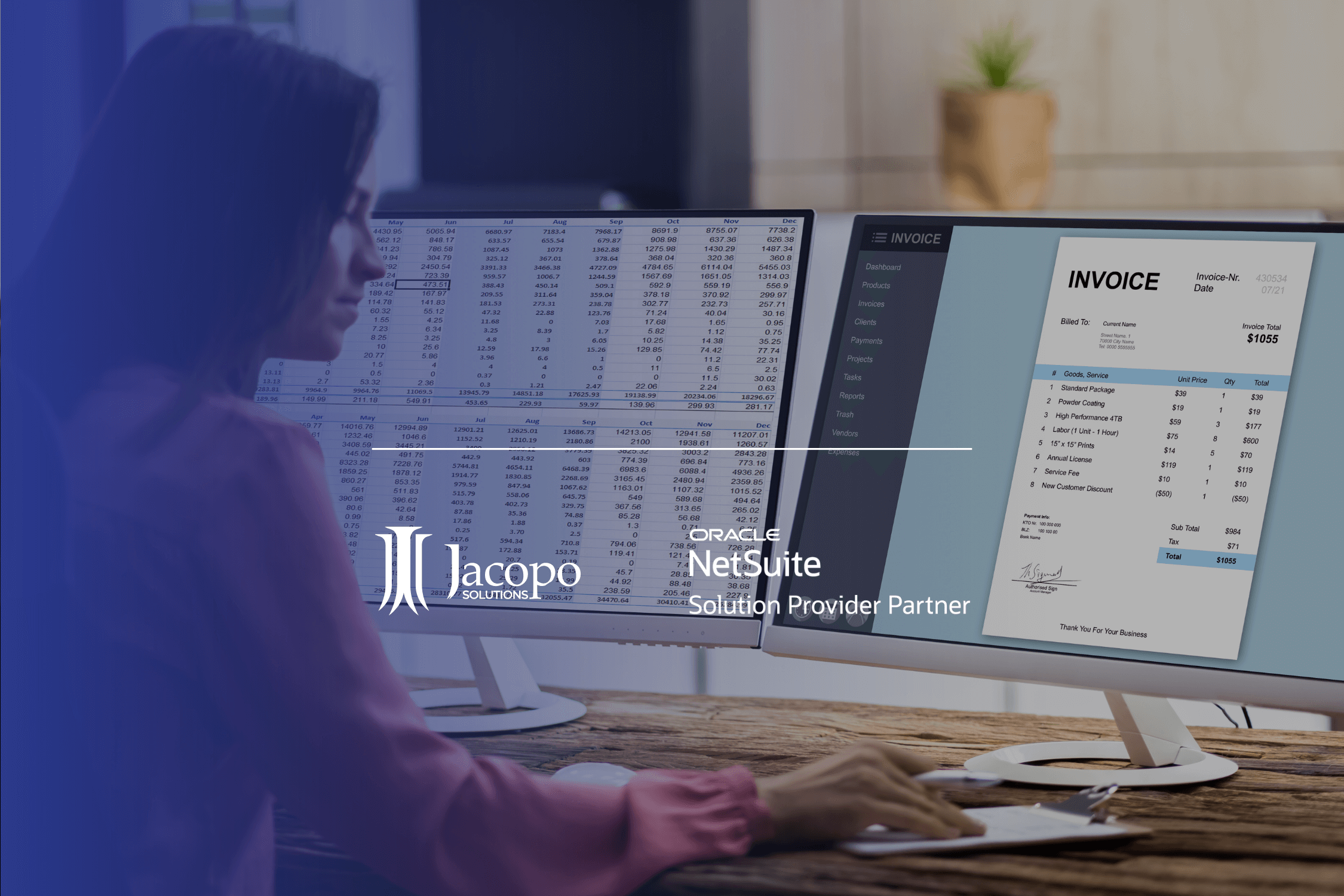
Having implemented several ERP software solutions for businesses across various industries, I’ve seen firsthand the challenges that can arise when selecting the right ERP solution.
While ERP systems can transform a company’s operations by streamlining processes and providing real-time insights, navigating the complexities of implementation requires careful planning.
In this article, I’ll share my key challenges, from data migration and change management to integration and customisation.
Based on my experience, I’ll also offer practical advice to ensure a smoother transition, minimise disruptions, and maximise the value of your ERP investment.
What is ERP software?
You probably know this already, but I’ll add this for clarity.
Enterprise Resource Planning (ERP) is a type of software that helps organisations manage and integrate various business processes, such as financial management, human resources, supply chain management, and project management. It helps business leaders streamline company activity by connecting all data points and providing accurate business insights. ERP systems often integrate with accounting software to enhance financial reporting and operational efficiency.
ERP systems provide a single platform for managing all aspects of a business, enabling organisations to streamline their operations, improve efficiency, and make data-driven decisions.
ERP software can be customised to meet the specific needs of different businesses, regardless of their size or industry.
From HR and accounting to workforce management and multi-entity financial consolidation, connected ERP software lets users share information across the entire business from a secure database. In short, it connects the dots, packaging data into one simple system.
Enterprise resource planning modules support every aspect of your business processes
ERP software typically consists of modules for different business functions.
Each module can be customised and configured to suit each business’s specific needs and preferences. Selecting the right ERP vendor is crucial to ensuring that these modules integrate seamlessly and meet the business’s specific needs.
Some examples of how clients have approached me for ERP software solutions are:
Accounting and Finance
Helps businesses track their income and expenses, manage their cash flow, comply with tax regulations, and generate financial statements and reports. Integrating accounting software within ERP systems can significantly enhance financial reporting and operational efficiency.
Inventory and Warehouse Management
It allows businesses to monitor their inventory levels, avoid stockouts or overstocking, optimise their warehouse layout and operations, and reduce inventory costs and wastage.
Production and Manufacturing
It helps businesses plan and optimise their production and manufacturing activities, ensure product quality and consistency, reduce production costs and downtime, and comply with industry standards and regulations.
Sales and Marketing
Facilitates the business’s sales and marketing activities, such as lead generation, customer relationship management, order management, pricing, invoicing, and delivery.
Human Resources and Payroll
Manages the business’s human resources and payroll functions, such as recruitment, training, performance appraisal, compensation, benefits, attendance, and payroll. This module can help businesses hire and retain talent, motivate and reward employees, track and manage employee data and records, and comply with labour laws and regulations.
Benefits of an enterprise resource planning systems
Enterprise resource planning tools help you streamline core business processes and collaborate effectively across departments, providing real-time information about your company, highlighting areas for improvement, and ensuring you comply with financial regulations. Improved efficiency and productivity through automation of business processes
Streamline key processes
Consolidate daily operations and maximise efficiency with an easy-to-use enterprise resource planning software.
Keep costs down
Implementation is easy, and ERP systems help identify areas for improvement and inform larger business decisions to keep costs down while growing your company.
Increase productivity
Improve the flow of information between teams to ensure everyone is on the same page. Enterprise software helps boost employee morale by simplifying operations and improving efficiency.
Future-proof your business
You can better define your goals, identify business needs, and expand into new territories or markets with in-depth insights. Planning business growth is made simple with the right ERP tools.
ERP systems for all types of businesses and industries
Suppose you run a startup, medium-sized business, or enterprise. ERP software can address different sectors’ specific challenges and needs, helping them manage their operations, resources, and data more effectively.
My team and I have managed to implement NetSuite ERP for the following industries:
Healthcare
An ERP system helps medical businesses meet patients’ needs faster and better. It makes healthcare easier by keeping data safe, protecting patients by providing real-time insights, and connecting processes.
Food industry
ERP software for the food industry streamlines operations and reduces silos. It enables demand planning, inventory management, order fulfilment, quality and compliance, and resource control.
Logistics & Distribution
ERP can automate processes for the distribution industry, with real-time views into inventory across multiple warehouses, sales and purchasing, supply and demand chain status, and customer services.
Manufacturing
The manufacturing industry uses ERP software to improve production planning and scheduling, optimise sources, materials, and equipment, track production processes, and generate reports and audits.
Supply chain management
ERP software can help plan, coordinate and execute the flow of materials, services and information from suppliers to customers by providing real-time data and analytics on inventory, orders, shipments and deliveries.
Construction
ERP software for the construction industry can plan, monitor and control projects from beginning to end, with visibility over scope, schedule, logistics, resources, budget, quality, and progress.
Professional services
An ERP system can help automate time-consuming tasks and eliminate human errors in project management, financial management, HCM and CRM. It can also help with analytics, dashboards, forecasting, and smarter decision-making.
Deployment and integration of ERP software
ERP deployment requires careful planning, preparation, and execution. As a leading provider of ERP software solutions for small and medium-sized businesses, Jacopo can help you transition smoothly to a more integrated and efficient ERP solution. Choosing the right ERP vendor can mitigate potential onboarding challenges and ensure effective integration with existing systems.
On-premise ERP deployment
On-premise ERP means installing and running the ERP software on your servers and hardware, which you own and maintain. This gives you more control over customisation and data security but requires more upfront investment, technical expertise, and ongoing maintenance.
Cloud-based deployment
Cloud-based ERP means accessing and using the ERP software over the internet, hosted by a third-party vendor. You don’t have to worry about installing, updating, or maintaining the software, as the vendor takes care of it. You pay a subscription fee based on your usage and needs, and you can access the system from anywhere, anytime. However, you would have less access to customisation.
Hybrid ERP deployment
Hybrid ERP means combining on-premise and cloud-based ERP solutions, depending on your specific needs. For example, you can keep some of your core functions on-premise while using cloud-based ERP for some of your remote functions, so you get the best of both worlds while balancing the trade-offs. Technical complexity, coordination challenges, and potential compatibility and performance issues could exist.
Open-source ERP deployment
Open-source ERP software provides flexibility and customisation, lowering the total cost of ownership. Open-source ERP stands for Open-Source enterprise resource planning software and, as such, gives you four significant freedoms: the freedom to use the software, copy it, study it and modify it (and even redistribute the modified versions).
Industry-specific ERP software
Industry-specific ERP systems are designed to meet the needs of a specific industry. They are often developed by smaller, niche companies made up of a team of industry experts who focus solely on solving the unique needs of their industry. Industry-specific ERP systems include the same features as generic systems — accounting, finance, inventory management, project management, etc. — but will also have features that target the unique needs of the industry for which they were built.
What are the common ERP implementation challenges?
Deploying ERP software can streamline business operations, but it comes with its own set of challenges. Implementing new planning tools is one thing, but ensuring effective integration and adoption is a different challenge altogether. Selecting a capable ERP vendor can help mitigate these challenges and provide a smoother implementation process. Here are some key hurdles businesses may face during ERP implementation:
Data migration: Migrating data to a new ERP system demands careful planning and execution. It involves significant workforce, expenses, and data integrity, compatibility, and security risks. Clean your data before migration to maintain quality and relevance. Rolling out-migration in phases minimises disruption and allows for testing at each stage.
Change management: Implementing an ERP system often requires changes to business processes, employee roles, and company culture. Resistance to change, lack of communication, and inadequate training can hinder the system’s acceptance. Involve key stakeholders early, gather feedback, and establish support teams to assist employees post-implementation.
Customisation: Customisations offer standard features; some businesses require them. However, this can add complexities, increase costs, and affect flexibility and scalability. Focus on modular customisation, which can be easily adapted or removed if necessary.
Integration: ERP systems must integrate with other business systems like CRM, HR, and BI, which can raise technical challenges related to compatibility, interoperability, and data syncing. To manage the integration process effectively, assemble a cross-functional team with IT and business expertise.
Training: A successful ERP implementation requires significant employee training and investment in support. Adequate training ensures employees can effectively use the system, minimising resistance and maximising the ERP’s potential.
By addressing these challenges carefully, businesses can improve the chances of a smooth and successful ERP implementation.
What is the business case for adopting an ERP software system?
ERP can help businesses improve efficiency, reduce costs, and enhance customer satisfaction, but implementation can be complex and costly, requiring careful planning and stakeholder buy-in. Here are some steps to help you build a strong business case for ERP implementation:
- Identify problems in your current system or processes, such as data errors, duplication, or inconsistencies. Consider the time and resources spent on manual tasks or multiple systems and whether service and delivery can be improved.
- Define the goals and benefits that you expect from ERP implementation. Do you want to streamline workflows, improve data quality, or automate processes? An ERP system can help to increase productivity, profitability, and customer loyalty? How will ERP help you achieve these outcomes?
- Estimate the costs and risks of ERP implementation. Calculate the price of software, hardware, and consulting fees. Work out how long the implementation will take and how it will affect daily operations. Remember to consider the potential challenges or pitfalls that you might encounter.
- It’s essential to compare the costs and benefits of ERP implementation with alternative solutions. For example, how much are you spending or losing by not implementing ERP? How much would upgrading your existing system cost or outsourcing some functions?
- Present your business case to the managers and budget holders with the authority and influence to approve the project. Use clear and compelling language, data, and visuals to show how ERP will solve the problems, deliver the benefits, and outweigh the costs and risks.
You can find even more tips on how and why to build a solid business case for a new ERP, by having a chat with me.
